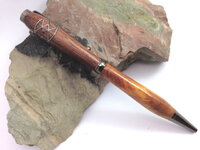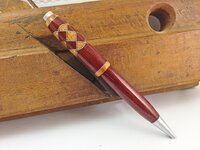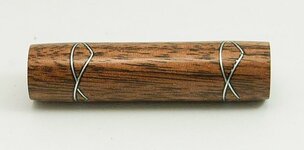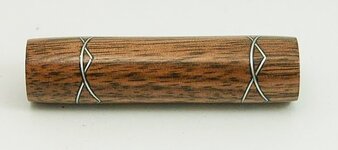Krash
Member
I was frustrated with the offset I got when my saw kerf didn't match my segmenting material. I envisioned the issue with the material removed and how I might correct it.
The first picture is a pen without the correction.
The second picture is my first attempt with the correction. It obviously isn't foolproof yet but it is closer. I probably should have chosen an easier design for my first attempt.
The third attachment is my correction writeup for anybody that is interested.
Let me know what you think.
The first picture is a pen without the correction.
The second picture is my first attempt with the correction. It obviously isn't foolproof yet but it is closer. I probably should have chosen an easier design for my first attempt.
The third attachment is my correction writeup for anybody that is interested.
Let me know what you think.




